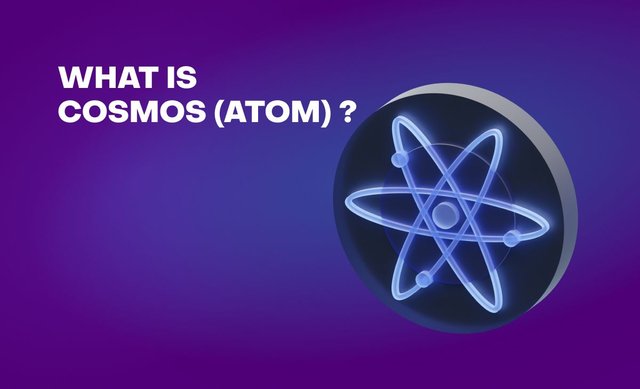Cosmos Hub: Staking ATOM in the Interchain Ecosystem of 2025
Key Takeaways:
- Cosmos Ecosystem: The Cosmos Hub anchors over 100 appchains, connecting them via IBC for seamless interoperability.
- Staking Rewards: ATOM staking yields 12-15% APR, enhanced by Interchain Security and consumer chain fees.
- Interoperability: IBC V2 (Eurica) and cross-chain integrations drive ATOM’s utility across ecosystems.
The Interchain Vision Takes Flight
The Cosmos Hub, often hailed as the "Internet of Blockchains," stands at the forefront of a decentralized revolution in 2025, knitting together over 100 appchains into a cohesive, interoperable ecosystem. With a $1.73 billion market cap and ATOM priced at $4.41, the Hub secures its network through Proof-of-Stake (PoS), where 20% of ATOM’s 390.9 million circulating supply is staked by 500,000 delegators. This robust staking model not only fortifies the Cosmos Hub but also fuels cross-chain innovation, enabling seamless data and asset transfers via the Inter-Blockchain Communication (IBC) protocol. By offering high yields and governance power, ATOM staking empowers users to shape a decentralized future while earning passive income.Staking Rewards in a Dynamic Ecosystem
As investors explore staking crypto options like Ethereum and Solana, Cosmos Hub’s 12-15% APR stands out, driven by inflationary rewards and Interchain Security (ICS) fees from consumer chains like Neutron and Stride. Staking 100 ATOM on platforms like Everstake or Keplr yields ~12-15 ATOM annually ($53-$66 at $4.41/ATOM), with 180 validators ensuring network security. The 2025 Eurica upgrade (IBC V2) simplifies integration with non-Cosmos chains like Ethereum, boosting transaction volume by 80% and enhancing rewards. Stride’s liquid staking, with $150 million TVL, allows stakers to mint stATOM for DeFi use, adding 1-2% APY via Osmosis pools. Key staking benefits include:- High APRs: 12-15% returns from inflation and ICS fees.
- Liquid Staking: stATOM enables DeFi participation without unbonding.
- Governance Power: Staked ATOM votes on proposals like ICS expansions.
- Low Fees: Platforms like Revolut offer 0% staking fees.
- Consumer Chain Rewards: 25% of Neutron’s fees boost ATOM yields.
Interchain Security and Appchain Integration
The Cosmos Hub’s Interchain Security (ICS) model, launched in 2023, transforms staking by allowing appchains like Neutron to lease the Hub’s validator set, securing $1.5 billion in staked ATOM. This eliminates the need for consumer chains to bootstrap their own validators, reducing costs and enhancing security. In 2025, 471 IBC channels connect 67 peers, facilitating $4 billion in monthly transfers. The SkipGo platform, handling 80% of IBC volume, streamlines cross-chain swaps, while Osmosis, the leading DEX, boosts liquidity with $500 million TVL. ICS ensures slashing penalties align across chains, maintaining trustless operations.Scalability Through IBC and Eurica
Cosmos Hub’s interoperability shines with IBC V2 (Eurica), enabling 30+ new appchains, including Ripple’s EVM chain, to join in 2025. The hub-and-spoke model minimizes connection hops, supporting 100+ sovereign chains with customized consensus via Cosmos SDK and CometBFT. Unlike Polkadot’s Relay Chain, Cosmos avoids computational bottlenecks, as each appchain retains its execution layer. The ATOM Accelerator DAO, funded with 975,800 ATOM, sponsors projects like Agoric, which leverages JavaScript for accessible dApp development. Interoperability drivers include:- IBC V2 (Eurica): Simplifies Ethereum and Avalanche integrations.
- Hub-and-Spoke: 471 channels ensure efficient cross-chain communication.
- Sovereign Appchains: Customizable consensus enhances scalability.
- Liquidity Hubs: Osmosis and Noble drive $4 billion in transfers.
Conclusion
Cosmos Hub’s $1.73 billion ecosystem and 12-15% APR staking rewards make it a powerhouse in 2025, connecting 100+ appchains through IBC and Interchain Security. With 20% of ATOM staked and platforms like Stride and Osmosis enhancing liquidity, the Hub drives DeFi and cross-chain innovation. Eurica’s integration with Ethereum and Ripple’s EVM chain expands ATOM’s utility, while 500,000 delegators ensure decentralized governance. Despite market volatility, Cosmos Hub’s scalable, interoperable model positions it as a leader, empowering stakers and developers to build the interchain future.FAQ
- What makes Cosmos Hub’s staking rewards attractive?
- How does Interchain Security benefit ATOM stakers?
- What is the role of IBC in Cosmos Hub?
- Can retail investors stake ATOM easily?
- How does Stride enhance ATOM staking?
- What risks does ATOM staking involve?
- How does Cosmos Hub support appchain growth?
Sort: Trending
Loading...
